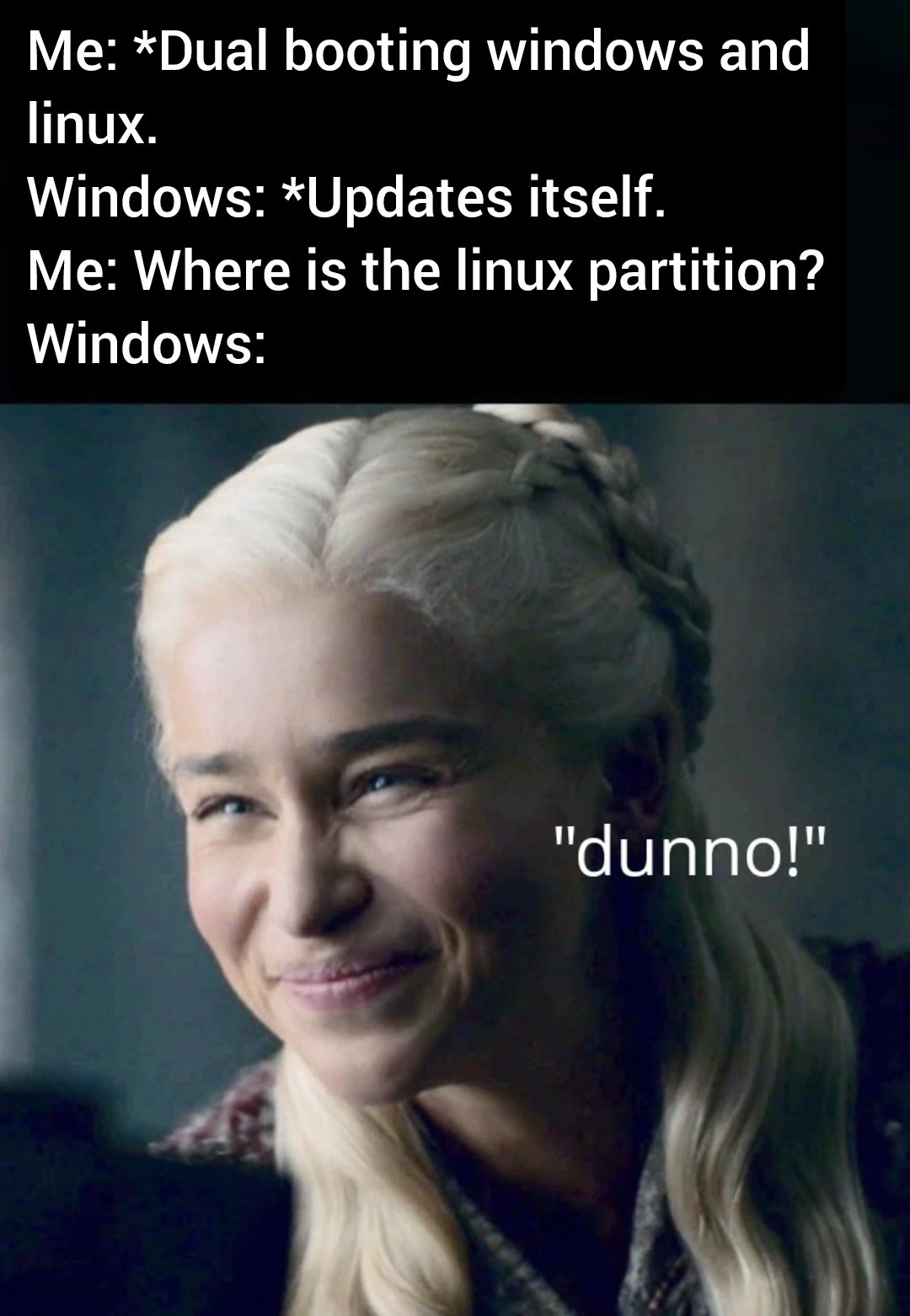this post was submitted on 27 Sep 2023
1504 points (96.0% liked)
linuxmemes
20880 readers
4 users here now
I use Arch btw
Sister communities:
- LemmyMemes: Memes
- LemmyShitpost: Anything and everything goes.
- RISA: Star Trek memes and shitposts
Community rules
- Follow the site-wide rules and code of conduct
- Be civil
- Post Linux-related content
- No recent reposts
Please report posts and comments that break these rules!
founded 1 year ago
MODERATORS
you are viewing a single comment's thread
view the rest of the comments
view the rest of the comments

It tends to happen if you are not using the windows bootloader (GRUB for example) but if you use the windows bootloader it should be fine
Oh it just changes the bootloader? That's not a big deal. Easy to fix from any live usb.
Also, for any distro hoppers out there... Do yourself a favour and put Ventoy on a USB. You can thank me later
With EFI systems this doesn't matter. It was an issue with the legacy BIOS bootloader systems about a decade ago though.
I don't remember if Windows updates would cause it but installing Windows second definitely would. Likewise, I think upgrading (from say Windows 7 to 10) might. Basically Windows is just like "this MBR? It's actually mine, thanks." With no option to not erase it.
EFI systems don't use the MBR. Windows will default to using the whole disk if you don't use the "advanced" button, but so will most linux distro installers.
Correct. But Windows is not changing the BIOS boot order. It will however change your EFI to make itself the default boot again, even if you configured it to use a separate ESP on a completely separate disk and the boot menu residing there. That's by design as you can access your efi settings from a running system via software, while your chances to change your BIOS settings from outside the BIOS are slim to non-existent.
Also every BIOS not decades old can indead run with a hybrid setup of GPT formated disk with a small partiton to replace the MBR functionality.
I'm talking about BIOS, yeah, sorry if it was unclear. My 2009 CPU is still hanging on. Barely.
2009 usually means you could indeed run it without an MBR: GPT format plus a very small (2MB) partition flagged to take over the functionality of containing a bootloader normally embedded in the MBR.
Pretty sure it happened to me on UEFI as well
In fact old BIOS systems are more resilient. With a separate bootload on another disk, starting from that disk and then chainloading Windows (on another disk) or Linux works very stable as Windows is not trying to change the boot order of BIOS.
But Windows likes to also meddle with UEFI. Even with separate disks each with their own ESP it likes to change you EFI settings to make windows the default again instead of the boot menu on another disk (everything on the same single ESP is even worse, because then Windows can access and delete everything now Windows and you have to restore the boot loader/menu).